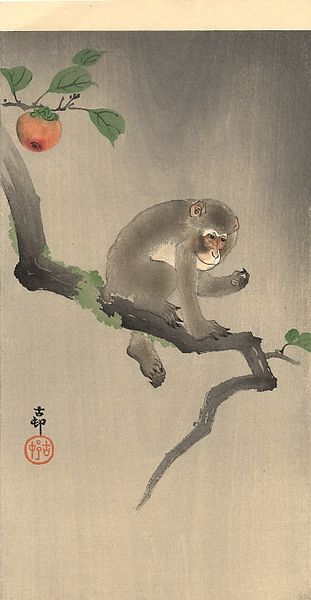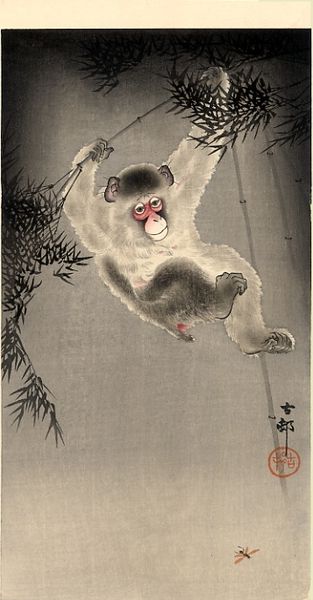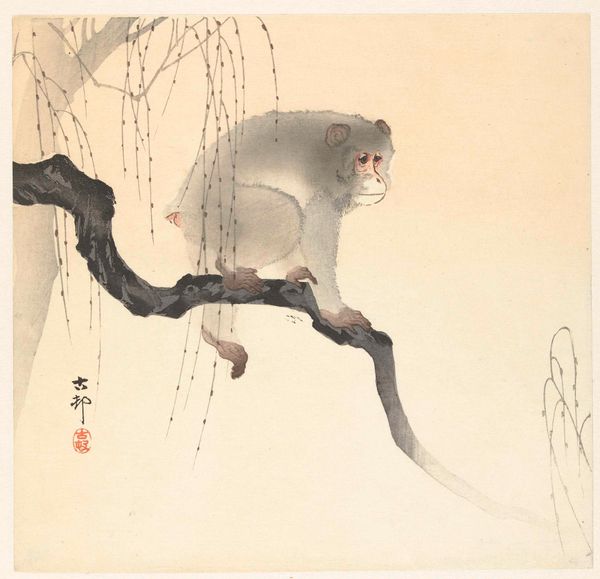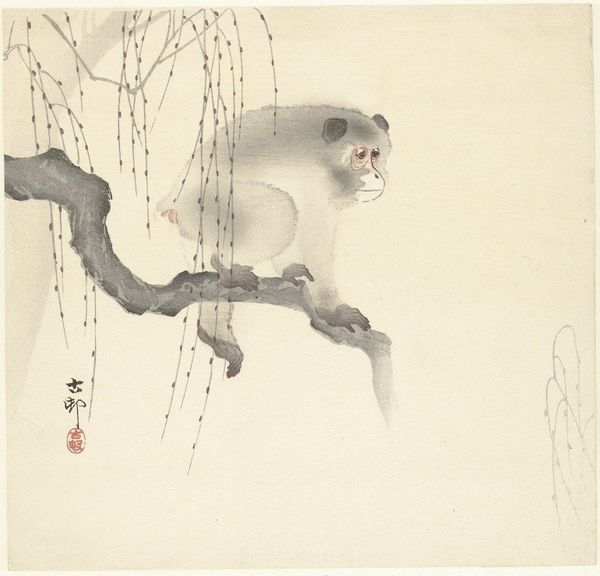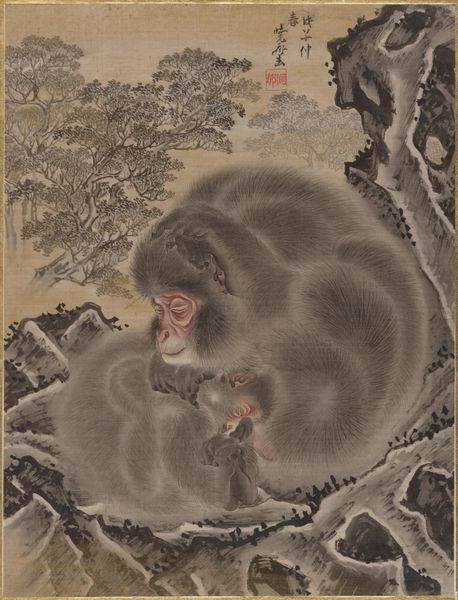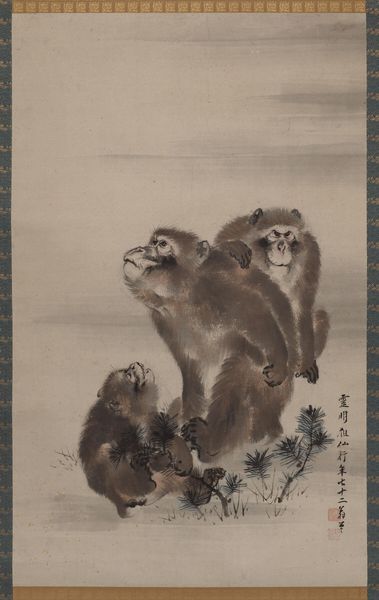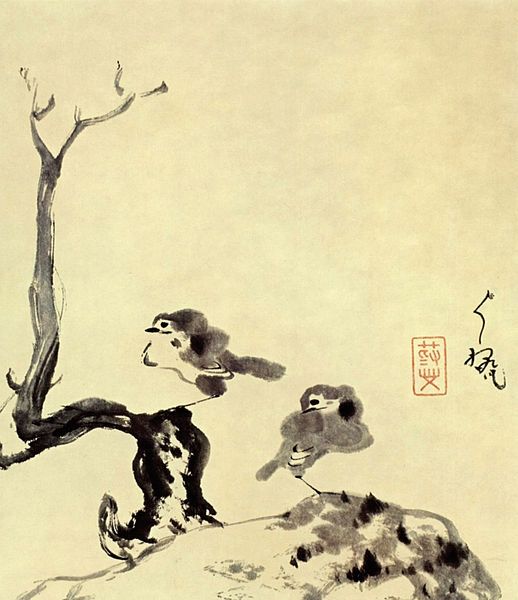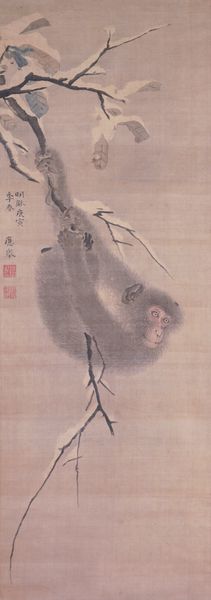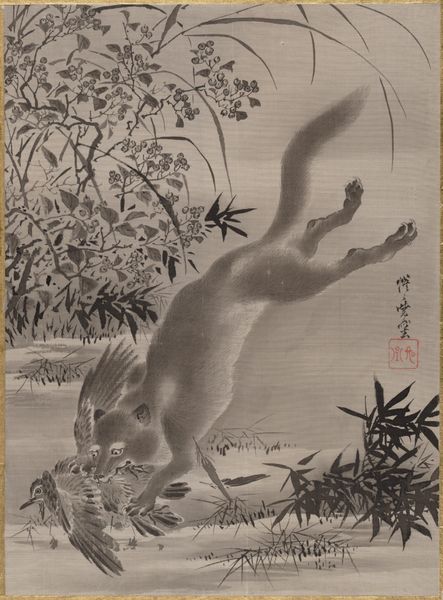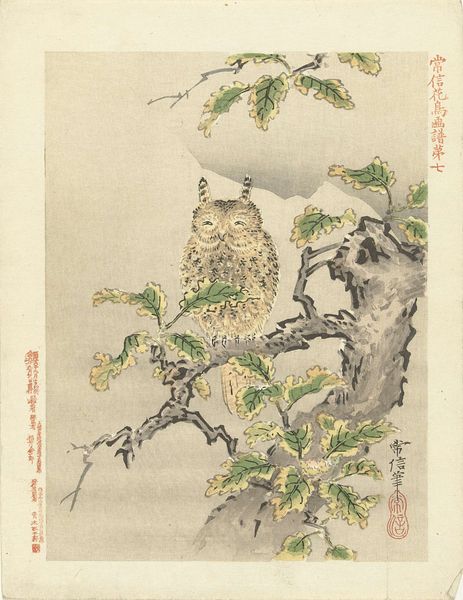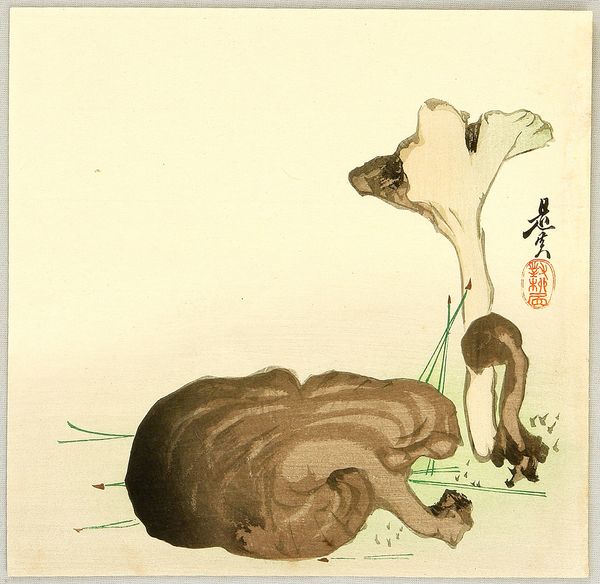
Copyright: Public Domain: Artvee
Editor: Here we have "Monkey in kaki tree," a woodblock print by Ohara Koson, created sometime between 1900 and 1930. The tones are so muted, almost monochromatic except for the vibrant persimmon, which makes the monkey seem even more contemplative. What do you see in this piece? Curator: Ukiyo-e prints like this gained popularity during a period of increased urbanization and commercialization in Japan. We must consider its position within the evolving artistic market and its impact on both domestic and international audiences. Where do you think it would have been consumed and by whom? Editor: Perhaps by wealthier merchants, eager to display their knowledge and sophistication? It’s far more refined than, say, a street advertisement. Curator: Precisely. The composition subtly promotes the natural world in urban life, yet these prints also became extremely popular in the West, helping to construct and reinforce Western perceptions about Japan, its cultural sophistication and tranquil essence. The artist may have been consciously creating art for the western market. Editor: I didn’t think about its reception outside of Japan. Does the rise of "Japonisme" in Western art relate to this piece? Curator: Absolutely! Western artists admired and emulated the flat planes, bold outlines, and unusual perspectives found in prints like this. However, it's essential to acknowledge that these perceptions were sometimes idealized or even orientalist in nature. Were there competing visions about what “Japanese art” should be doing, inside and outside of Japan? Editor: I never really considered woodblock prints as tools in shaping international relations, especially not ones with just a monkey eating fruit. Curator: It shows the powerful intersection between art, cultural exchange, and political positioning, isn't it? Editor: Definitely something I’ll keep in mind as I analyze art in the future.
Comments
No comments
Be the first to comment and join the conversation on the ultimate creative platform.
